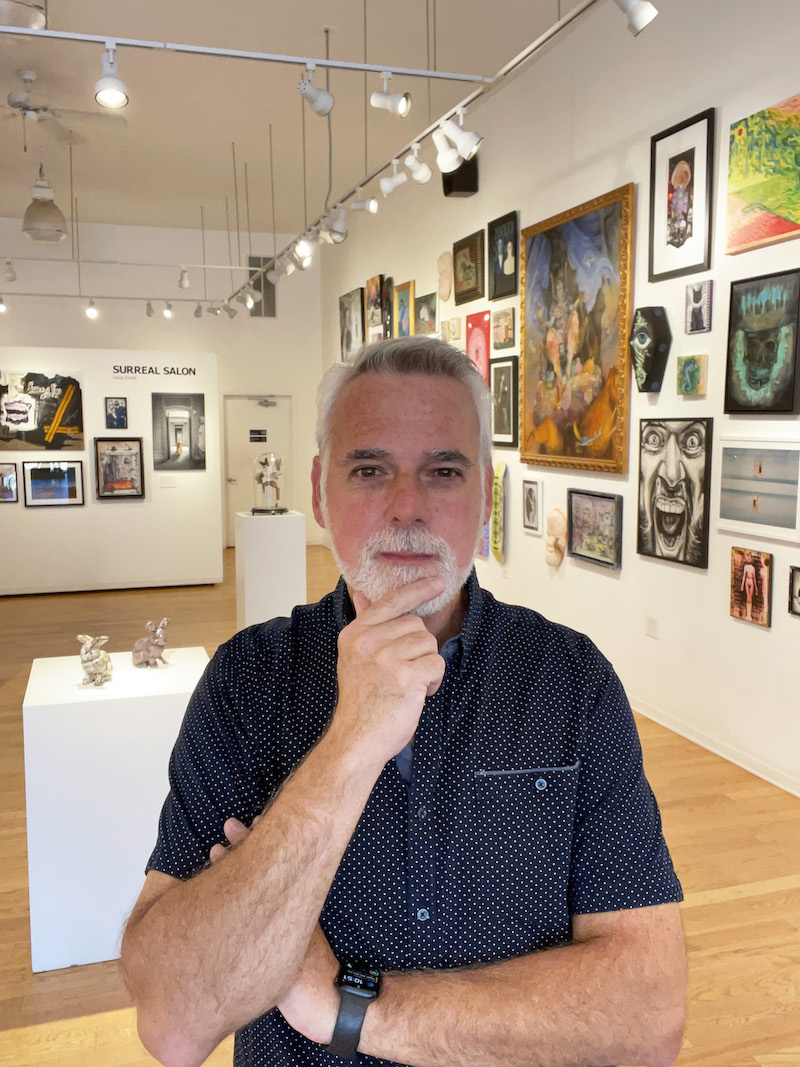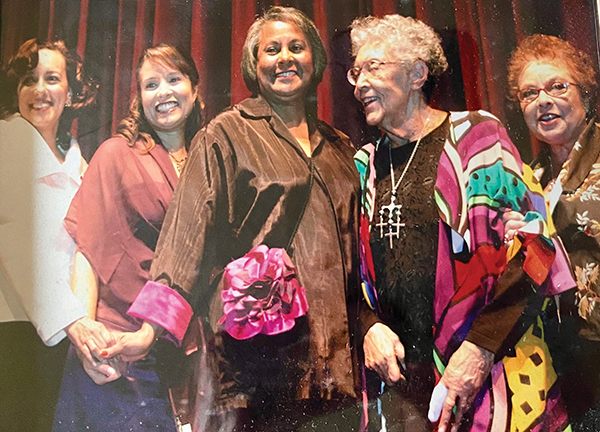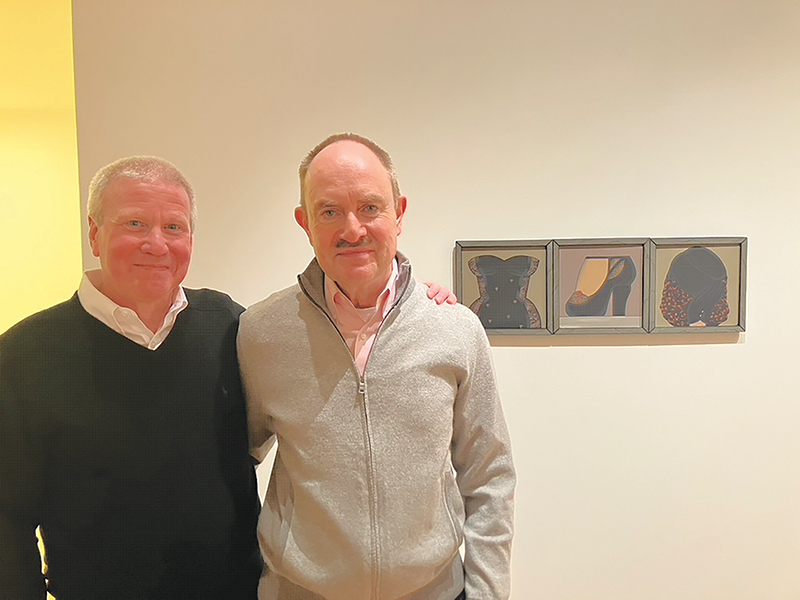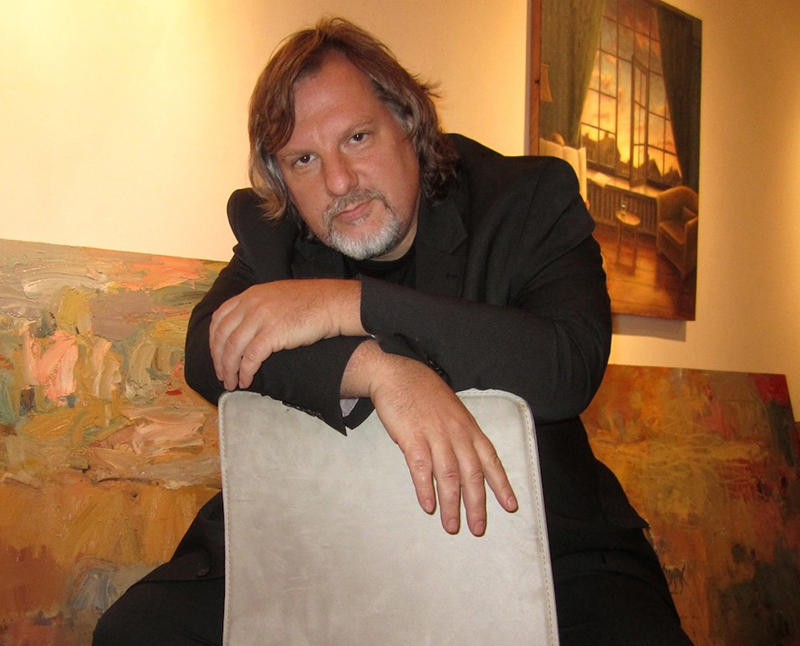CGN Insights: Chris Jackson of Jackson Junge Gallery

CGN works with dozens of art world leaders, creatives and supporters all year long. Each one has a different perspective on the industry in general as well as their own role within it. CGN is pleased to share many of these insights and personal stories in a new online series.

By ABBEY KOT
Since 2009, Chris Jackson and his partner, Laura Lee Junge, have owned and operated the Jackson Junge Gallery out of Chicago’s Wicker Park neighborhood. This week, we sat down with Jackson to discuss the details of his career as well as his personal insights on the gallery’s unique shows and services.
CGN: Your career has a dynamic background in the arts world, ranging from work in theater and television to the founding of this gallery. What are some surprising commonalities you have found throughout your career?
Chris Jackson: Throughout my career in theater, film, television, and the arts—including founding a gallery—I’ve noticed several surprising themes across these mediums. Storytelling is at the heart of each. In theater and television, storytelling is more overt, with narratives shaping each performance or episode. In the art world, it’s subtler, as curating an exhibition involves crafting a story that connects the artworks in meaningful ways for viewers.
Each field also demands significant teamwork. In theater, film and television, writers, directors, actors, and crews work together to bring a vision to life. Similarly, in the art world, I collaborate closely with artists, curators, and the public. The success of any project depends deeply on this collaborative spirit. Creativity and out-of-the-box thinking are essential in all three fields. In theater and commercial work, problem-solving happens on the fly—managing time, budget, or a tricky scene. In the gallery world, I balance artistic vision with practical considerations like space, lighting, and presentation. Regardless of the medium, the ultimate goal is to engage the audience, evoking an emotional or intellectual response. The challenge lies in understanding your audience and connecting with them on a deeper level.
The arts also demand adaptability and resilience. In the performing world, you might face changing scripts, technical issues, or unexpected challenges, while in the gallery world, market trends and public tastes are constantly evolving. The ability to pivot and embrace change is crucial in both arenas. Authenticity is valued across all fields—whether it’s an actor’s performance, a showrunner’s vision, or an artist’s work in a gallery. Audiences respond to genuine expressions of creativity. Emotions drive reactions in theater, film, television, and the visual arts. All these forms thrive on making people feel—whether joy, sadness, curiosity, or even discomfort. The ability to evoke emotions is a common thread that transcends the medium.
These shared elements emphasize that while the mediums may differ, the core principles that drive success in the arts are remarkably similar.
CGN: The Jackson Junge Gallery offers custom framing services alongside its typical exhibition space. What inspired you to curate an environment that suits the needs of collectors on multiple levels?
CJ: Combining custom framing services with a traditional exhibition space creates a comprehensive experience for collectors and art enthusiasts. The gallery can provide a complete, end-to-end service, allowing collectors to acquire a piece of art and leave with it fully framed and ready for display.
Framing serves as an extension of the artwork itself. The right frame can elevate a piece, enhancing its style, while the wrong one can detract from its impact. By offering custom framing in-house, the gallery retains creative control over how the artwork is ultimately displayed, aligning it with both the artist’s vision and the buyer’s preferences. Framing services also allow the gallery to build ongoing relationships with clients, as collectors often return for framing services for pieces acquired elsewhere. This creates opportunities to nurture relationships, share expertise, and introduce clients to new exhibitions.
From a business perspective, framing services provide an additional revenue stream, supporting the gallery’s sustainability even during fluctuations in art sales. This model allows the gallery to act not only as a curator of fine art but also as a partner in preserving it. In doing so, the gallery enhances the experience for art collectors while becoming more dynamic and versatile.
CGN: As the gallery’s proprietor, your day to day involves managing multiple facets of the business. Have there been any challenges that stand out to you as an important lesson that shapes your practice currently?
CJ: One of the most defining challenges of running a gallery is the constant balancing act between the creative and business sides. Early on, I learned that managing a gallery is as much about business as it is about showcasing art. Ensuring financial sustainability while maintaining artistic authenticity requires balancing creativity with practical considerations like overhead, pricing, and marketing. This ongoing negotiation has honed my ability to operate with both a creative vision and a business mindset.
The art market is ever-evolving, and staying responsive to these changes is crucial. Whether adapting to the rise of online art sales, shifts in collector preferences, or new technologies like AI, flexibility has become a cornerstone of the gallery’s strategy. This adaptability helps keep the gallery relevant and appealing to a diverse audience. Managing relationships with artists, collectors, and the local community is also key to the gallery’s success. Finding the right balance between promoting artists’ work and making collectors feel valued has been a delicate but essential lesson.
With so many facets to oversee—curating exhibitions, managing sales, overseeing framing services, marketing, and more—time management and delegation have become vital. Learning to trust staff with certain responsibilities while focusing on the broader vision is essential to avoid burnout and ensure smooth operations. Resilience is another invaluable lesson, especially in the face of uncertainty. Whether it’s fluctuations in art sales, unexpected costs, or global events like the COVID-19 pandemic, the ability to pivot, re-strategize, and explore new avenues (such as virtual exhibitions) shapes the gallery’s approach to both short-term and long-term goals.
Another important lesson is that each exhibition needs a strong, cohesive vision. Over time, refining the practice of curation to present exhibitions that resonate with visitors, tell a story, and provoke thought has become even more crucial. It’s not just about displaying beautiful art, it’s about creating a meaningful experience for viewers. These challenges and lessons underscore that managing an art gallery requires a blend of creativity, business awareness, and adaptability, all of which shape my approach to leadership.
CGN: What does the curation process look like when proposing a very open ended concept, such as your recurring TEN by TEN group exhibition, in which the only limitation is essentially size?
CJ: The curation process for an open-ended concept like the TEN by TEN exhibition, where size is the primary limitation, requires a careful balance of inclusivity, medium diversity, and cohesive presentation. With the 10x10 inch size as the only constraint, I remind our staff that this limitation serves to equalize all submissions, making the size both a challenge and a unifier for artists from various backgrounds.
We actively reach out to artists from a wide range of disciplines and backgrounds. An inclusive exhibition should represent diverse perspectives, styles, and cultural influences. TEN by TEN welcomes all artistic mediums—painting, sculpture, mixed media, photography, digital art, textiles, and more. The open call for submissions encourages artists to explore how their medium adapts to the 10x10 format. This exhibition creates space for both emerging and established artists, allowing visitors to discover new voices alongside familiar ones.
In TEN by TEN, size becomes a unifying thematic element. The artworks are displayed in a grid, emphasizing the consistent dimensions and highlighting how each artist uniquely fills that 10x10 space. This approach enables viewers to appreciate both the individuality of each piece and the cohesive visual impact of the collection as a whole.
By focusing on inclusivity, diverse mediums, and cohesive presentation, the TEN by TEN exhibition showcases the adaptability of artists and fosters a dialogue between different forms of creative expression, all within the shared 10x10 constraint. This not only highlights the variety of work possible within a common framework but also celebrates the richness of a collective artistic experience.
CGN: Is there any advice you would give to those looking to enter the gallery space, either on the creative or the administrative side?
CJ: Entering the gallery world—whether on the creative or administrative side—requires a combination of passion, perseverance, and practical skills.
For creatives, it’s essential to cultivate a consistent style or thematic focus that distinguishes your work. The Jackson Junge Gallery seeks local artists with a clear, unique voice and a cohesive body of work that tells a story or explores a specific idea. To gain exposure, I suggest displaying your work at local art fairs, community shows, or online platforms. Building relationships with galleries and curators is crucial. Attend gallery openings and events to network with curators, gallery owners, and other artists. Networking can lead to valuable connections and opportunities. Research galleries that align with your style and reach out with a professional portfolio and artist statement. We often invite artists to apply for our group exhibitions, which can lead to additional opportunities. Professionalism is key. Meet deadlines, communicate clearly, and be reliable. If you don’t get an opportunity right away, keep creating, refining your skills, and continue to reach out. Don’t be discouraged by rejection; be persistent.
For those interested in the administrative side, start by volunteering or interning at a gallery or museum to gain firsthand experience. Many galleries value practical experience, and internships provide insights into daily operations, curation, and event planning. Entry-level positions, such as front desk staff or gallery assistant, offer a solid foundation in customer service, sales, and gallery operations. Sales skills are especially valuable. Understanding how to connect with clients, tell the story of an artwork, and close a sale is essential. Marketing also plays a significant role in a gallery’s success, so learn about social media marketing, email campaigns, and event planning to promote exhibitions and attract visitors. If you’re interested in curation, practice by organizing smaller shows or pop-up exhibitions. This experience helps you build a portfolio and gain skills in developing themes, selecting works, and designing shows. Gallery work often involves juggling multiple tasks, from event planning to managing artists’ contracts. Strong organizational skills and flexibility are crucial, as gallery staff frequently wear many hats. Ultimately, working in a gallery is about supporting and championing artists. Building strong relationships with artists and helping them present their work to the world is incredibly rewarding and central to the role.
The gallery world can be competitive, but it’s also vibrant and full of opportunities for those who are passionate, resourceful, and determined to contribute to the art community.
Jackson Junge Gallery is located in Wicker Park at 1389 N. Milwaukee Ave., Chicago, IL 60622
#






